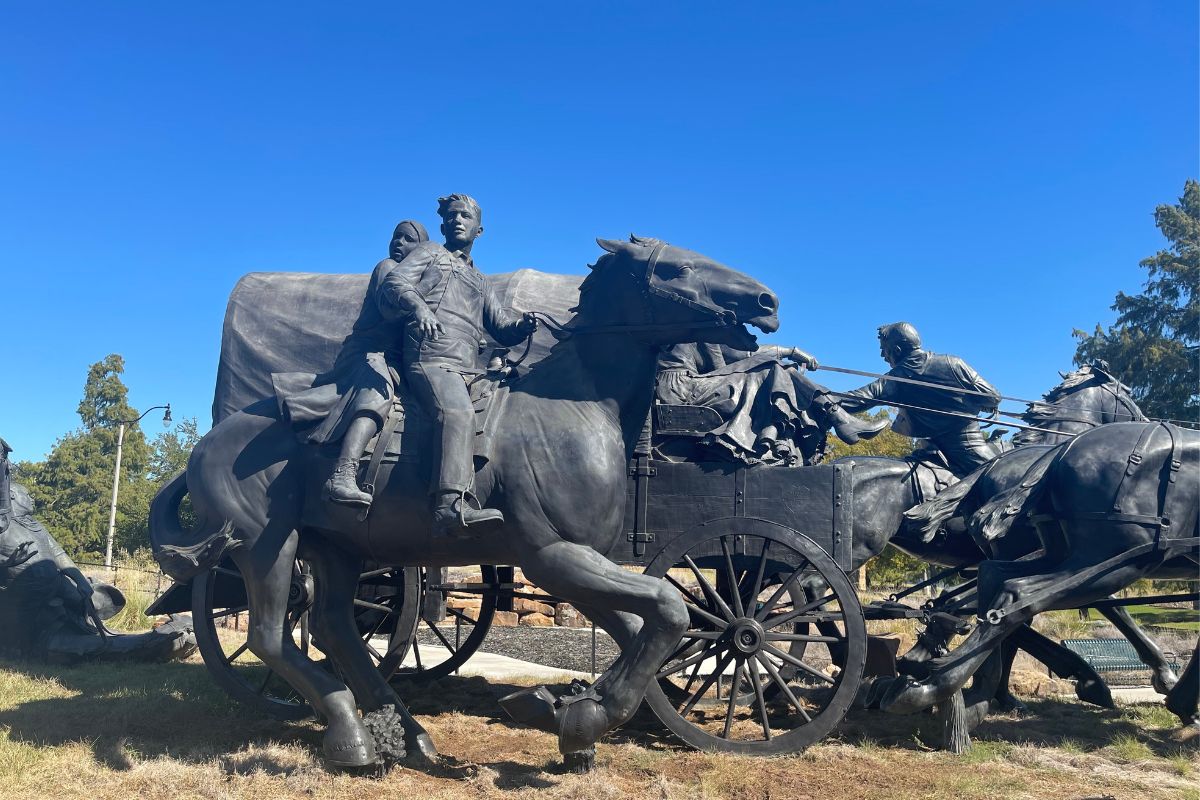Hidden Indigenous Meeting Grounds Of Oklahoma Territory

Have you ever wondered about the hidden stories of Oklahoma's indigenous meeting grounds? These places hold rich histories and cultural significance. Many tribes used these areas for gatherings, ceremonies, and important decisions. Visiting these sites offers a unique glimpse into the past and a deeper understanding of Native American heritage. From the lush landscapes of the Wichita Mountains to the serene banks of the Arkansas River, each location tells its own story. Whether you're a history buff or just curious, exploring these meeting grounds can be a rewarding experience. Ready to learn more about these fascinating places? Let's dive in!
Hidden Indigenous Meeting Grounds of Oklahoma Territory
Oklahoma, a state rich in Native American history, holds many hidden meeting grounds that played crucial roles in the lives of Indigenous peoples. These places, often overlooked, offer a glimpse into the cultural and social fabric of various tribes. Let's uncover some of these remarkable sites.
Sacred Ceremonial Sites
Many Indigenous tribes in Oklahoma have sacred sites where they conducted important ceremonies. These places hold spiritual significance and are often located in serene, natural settings.
Spiro Mounds
- Located in eastern Oklahoma, Spiro Mounds is an ancient ceremonial site used by the Caddoan Mississippian culture. It features large earthen mounds and artifacts that reveal much about the spiritual practices of the people who lived there.
Medicine Park
- Nestled in the Wichita Mountains, Medicine Park was a gathering place for the Plains tribes. Known for its healing waters, it was a site for rituals and ceremonies aimed at physical and spiritual healing.
Red Earth Festival Grounds
- Held annually in Oklahoma City, the Red Earth Festival celebrates Native American culture. The festival grounds become a vibrant meeting place where tribes from across the country come together to perform traditional dances and ceremonies.
Historical Council Grounds
Tribal councils were essential for decision-making and governance. These grounds were where leaders met to discuss important matters, make treaties, and resolve conflicts.
Council Oak Tree
- Located in Tulsa, the Council Oak Tree is a historic site where the Lochapoka Band of Creek Indians held council meetings. This ancient tree stands as a symbol of the tribe's resilience and governance.
Sequoyah's Cabin
- Near Sallisaw, Sequoyah's Cabin was the home of the Cherokee leader who created the Cherokee syllabary. It served as a meeting place for the Cherokee council and played a significant role in the tribe's history.
Standing Bear Park
- In Ponca City, Standing Bear Park honors the Ponca chief who fought for Native American rights. The park includes a council ring where tribal leaders can gather, reflecting the importance of council grounds in Indigenous culture.
Trade and Commerce Hubs
Trade was vital for Indigenous tribes, and certain locations became bustling hubs of commerce. These places facilitated the exchange of goods, ideas, and culture.
Chickasaw Cultural Center
- Located in Sulphur, the Chickasaw Cultural Center showcases the tribe's history and culture. It includes a replica of a traditional village where trade and commerce were central activities.
Cherokee Heritage Center
- In Tahlequah, the Cherokee Heritage Center features a reconstructed ancient village. This site highlights the importance of trade in Cherokee society, with exhibits showing how goods were exchanged with other tribes and settlers.
Fort Gibson Historic Site
- Fort Gibson, established in 1824, was a key trading post for various tribes. It became a meeting ground where Indigenous peoples traded goods with settlers and other tribes, fostering economic and cultural exchanges.
Educational and Cultural Preservation Sites
Preserving culture and educating future generations are vital for Indigenous communities. These sites serve as centers for learning and cultural preservation.
Gilcrease Museum
- In Tulsa, the Gilcrease Museum houses an extensive collection of Native American art and artifacts. It serves as an educational center where visitors can learn about the rich cultural heritage of Oklahoma's Indigenous tribes.
Chickasaw National Capitol
- Located in Tishomingo, the Chickasaw National Capitol building is a historic site that now functions as a museum. It preserves the history and culture of the Chickasaw Nation, offering educational programs and exhibits.
Five Civilized Tribes Museum
- In Muskogee, this museum is dedicated to the history of the Cherokee, Chickasaw, Choctaw, Creek, and Seminole tribes. It serves as a cultural preservation site, showcasing artifacts and providing educational resources about these tribes.
Discovering Oklahoma's Hidden Indigenous Meeting Grounds
Exploring Oklahoma's hidden Indigenous meeting grounds offers a unique glimpse into the rich history and culture of Native American tribes. These sacred sites, often overlooked, hold stories and traditions passed down through generations. Visiting places like the Spiro Mounds or the Washita Battlefield provides a deeper understanding of the land's significance to its original inhabitants.
Engaging with these sites fosters respect and appreciation for Indigenous cultures. It also highlights the importance of preserving these historical treasures for future generations. Whether you're a history buff or just curious, these hidden gems offer an enriching experience.
Next time you plan a trip, consider adding Oklahoma's Indigenous meeting grounds to your itinerary. You'll not only enjoy a fascinating journey through time but also contribute to the ongoing recognition and preservation of Native American heritage.

